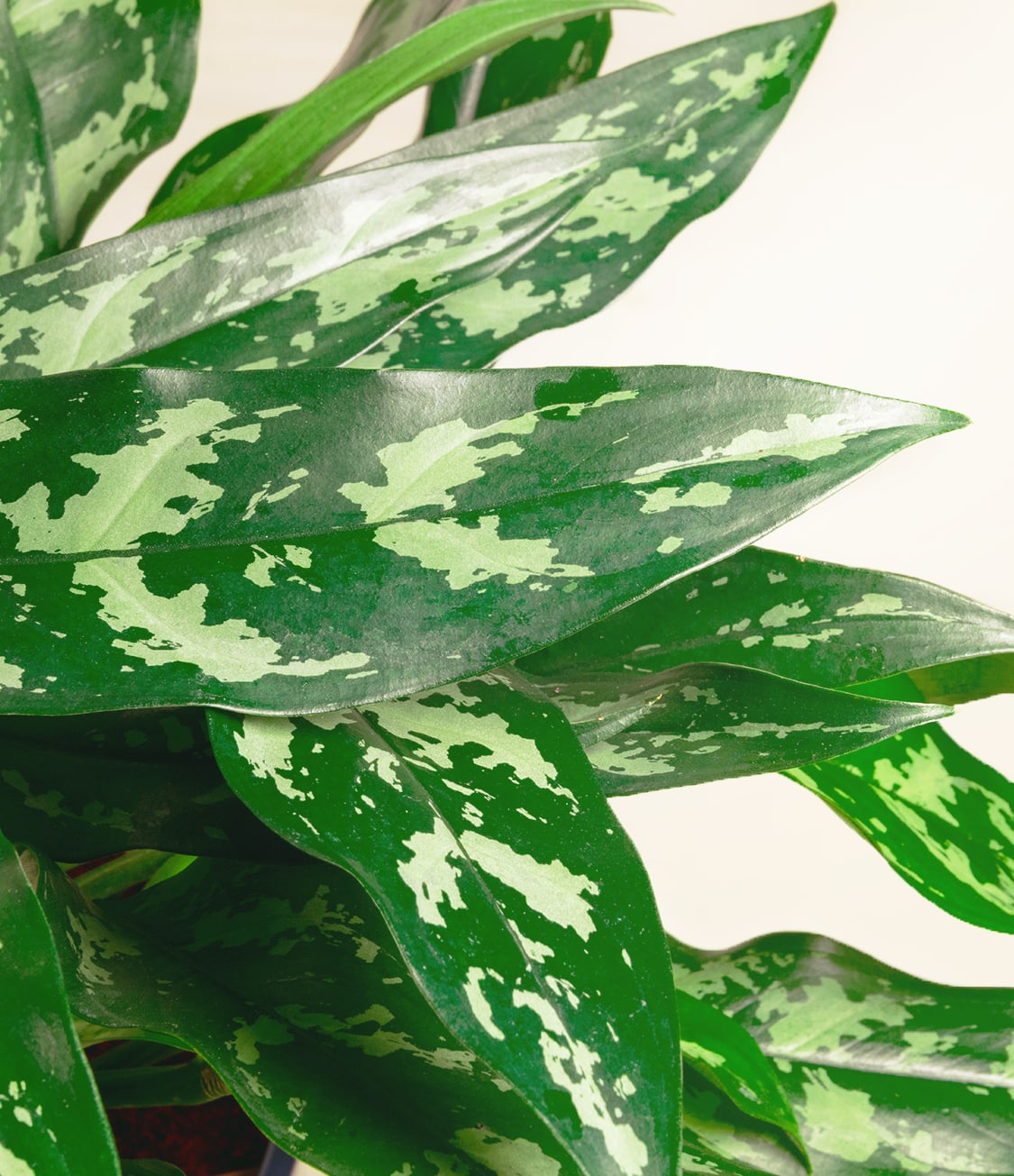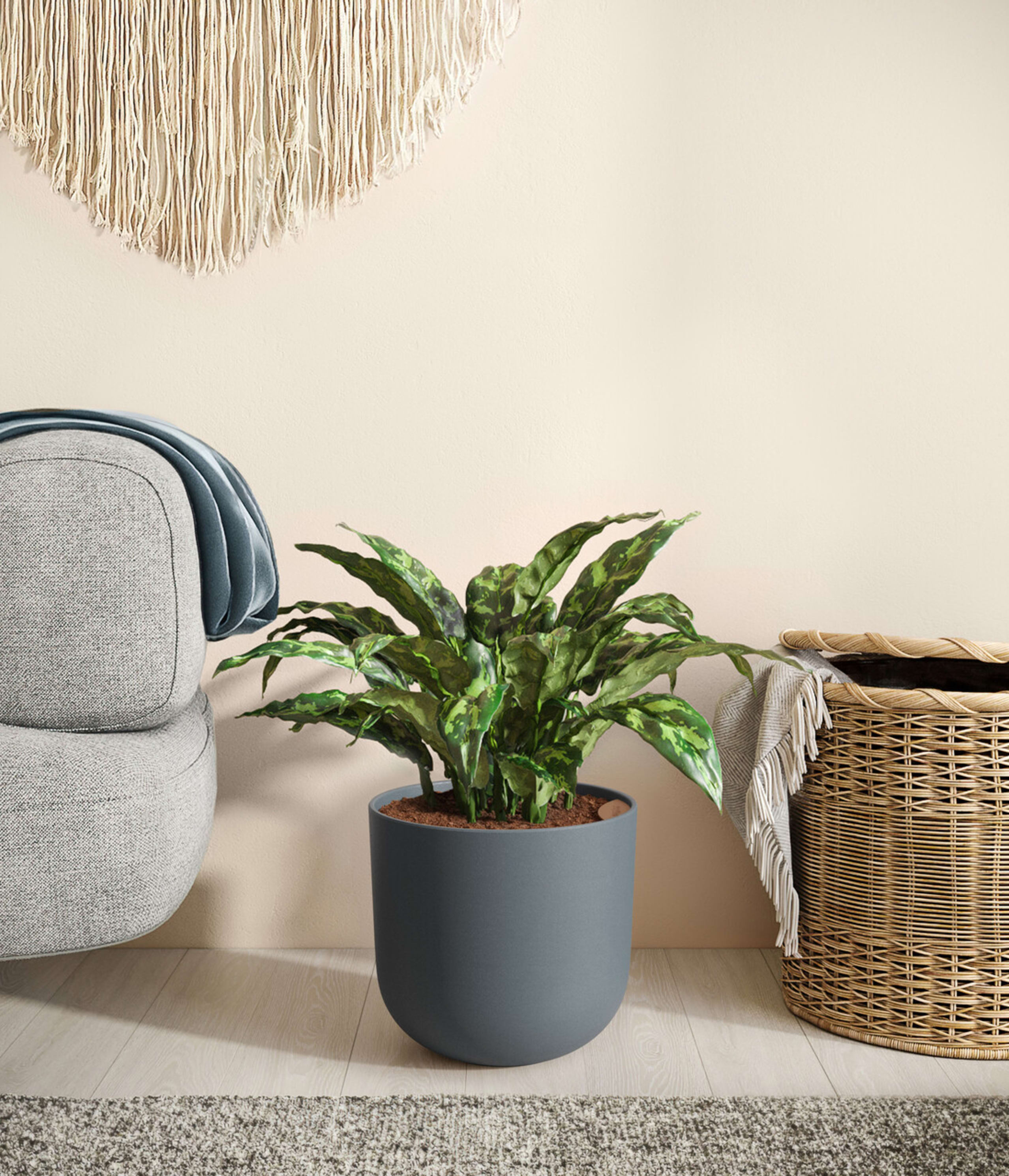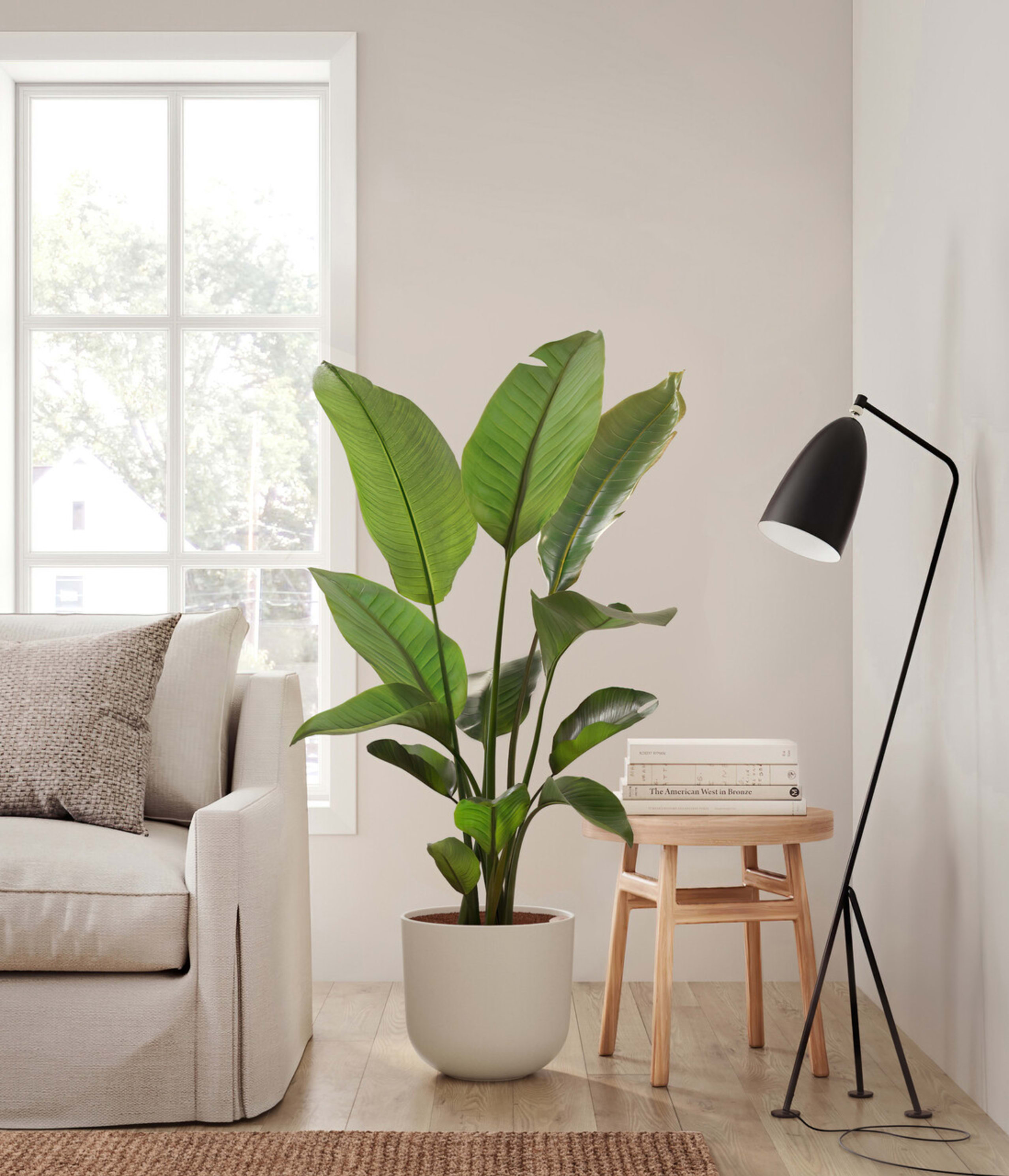Plant care library / Chinese Evergreen
How to Care for a Chinese Evergreen Plant
About Chinese Evergreen
Native to the tropical and subtropical regions of Asia and New Guinea, Aglaonema Maria has been cultivated for centuries as a good luck charm. Known to live a long and healthy life, it is believed to bring well-being to the home and all its dwellers. Aglaonema Maria wears luminant sage-green foliage that brings class and sophistication to any room.
Other common names
- Philippine Evergreen
- Poison Dart Plant
- Golden Evergreen
- Aglaonema Commutatum
How Often Should I Water My Chinese Evergreen?
In addition to sunlight, proper watering can make or break your plant's health. Luckily, With easyplant, watering your Chinese Evergreen is simple. Make sure to check the easyplant reservoir once a month and fill it when empty, and you're all set!
If you don't have an easyplant, you might wonder how often to water Chinese Evergreen. Water these plants on an as-needed basis. The plant's location will play a factor, so the brighter the spot, the more frequently you may need to water. The rule of thumb with Chinese Evergreen watering is to wait until the top two inches of the soil are dry. Ensure proper drainage so the plant isn't soggy and the roots aren't sitting in standing water.
Chinese Evergreen Light Needs
Chinese Evergreen grows best in a space with bright indirect light, where the sun rays are diffused, and can also adapt to spaces with medium to low light. Avoid placing it in spaces without natural light or with direct sunlight.
Chinese Evergreen Plant Care
During your Chinese Evergreen’s first few days at home, one or two leaves may wilt, and should be cut. This is a normal part of adjustment and no cause for concern.
Once adjusted, Chinese Evergreen is very easy to care for, and will reward your love for it by quickly bouncing back from any mishap.
To help it grow optimally and evenly, occasionally dust the leaves and rotate the pot by a ¼ turn once a month.
How Big Do Chinese Evergreen Plants Grow?
Aglaonema Maria grows slowly and steadily, starting as a plant you can easily place on a desk or coffee table. Eventually, it will reach up to three feet tall and wide, making it more suitable as a floor plant. The more light it receives, the faster it will grow.
There are a few factors of care for Chinese Evergreen plants that will impact their growth, including appropriate temperatures, soil care, pruning, adequate watering, and more. If properly cared for, the Chinese Evergreen will reach maturity between 4 to 6 years.
Temperature & Humidity
Aglaonema Maria houseplants are cold-sensitive, so place them away from air conditioning vents and cold drafts. The preferable temperature for optimal Chinese Evergreen care is 60˚F or above. Heating vents and stagnant air should also be avoided. Without proper circulation, bacteria and fungi can grow.
Chinese Evergreens can acclimate to typical humidity levels in the home. However, if you see browning at the tips of the leaves, the air may be too dry. You can use a humidifier or a tray with pebbles and water to increase humidity.
Are Chinese Evergreen Toxic for Pets & Kids?
Aglaonema Maria may be moderately toxic if ingested, so keep away from curious children and pets. The toxic element in Chinese Evergreen plants is calcium oxalate crystals. Chinese Evergreen can be toxic to dogs, cats, or other household pets if swallowed. Common symptoms are burning/swelling of the mouth, irritation in the throat, difficulty swallowing, vomiting, excessive drool, or foaming of the mouth.
If humans ingest the plant, they could experience stomach and mouth irritation and vomiting. If skin comes in contact with the plant's juice, it may cause contact dermatitis with symptoms including a rash, pain at the contact site, and mucous membrane irritation.
Troubleshooting Common Problems with Chinese Evergreen
If you notice that the lower leaves of your Chinese Evergreen begin turning brown, wait until they can be easily pulled off and simply remove them to allow new growth on top.
Frequently Asked Questions about Chinese Evergreen Plant
- How do you care for an indoor Chinese evergreen?
The care of Chinese Evergreen plants includes bright indirect sunlight, utilizing the easyplant self-watering system for watering (if not, watering when the top two inches of soil are dry), 60˚F or higher temperatures, and regular pruning. Regularly rotate your Chinese Evergreen plant, dust the leaves and keep an eye on humidity levels in the home.
- What is the difference between Chinese Evergreen and Dieffenbachia?Distinguishing Dieffenbachia, or Dumb Cane, from Chinese Evergreen can be challenging. They share several similar features, but there are notable differences. For one, Chinese Evergreen tend to include pink or silvery-gray coloration in the leaves and possess only 5-8 lateral veins per leaf, as opposed to the 20-30 on Dieffenbachia. Additionally, Chinese Evergreen plants are easy to care for and are less toxic than Dieffenbachia.
- How poisonous is Chinese evergreen?If ingested, Chinese Evergreen plants are moderately poisonous to pets like cats, dogs, and horses. They can also be slightly poisonous to humans and cause contact dermatitis if the plant's juice gets on the skin. They are no more poisonous to one type of pet than another. Chinese Evergreen plants are equally toxic to dogs and as they are toxic to cats.

 Small Plants
Small Plants Medium Plants
Medium Plants Plants Collections
Plants Collections Large Plants
Large Plants Huge Plants
Huge Plants